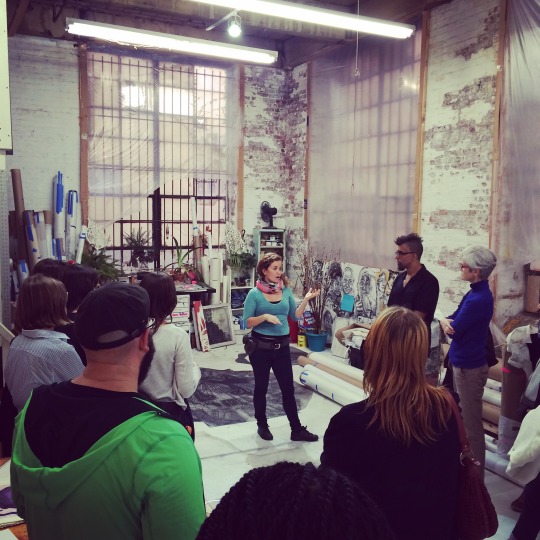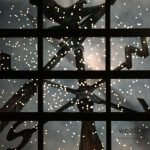Artists: This Is What You Need to Know About Gallerists
Just like any other relationship, it grows and evolves and is a process that is ultimately beneficial for both parties.
On September 21 2015, Asya Geisberg, Founder and Owner of Asya Geisberg Gallery in Chelsea, spoke to a packed room of artists at NYFA’s offices about the relationship between artists and gallerists. We attended the event and are sharing our summary of collected wisdoms with you here:
Galleries are not out to get you!
Galleries work really hard all the time on your behalf. They are sometimes suffering just as much as artists are and there is a lot of effort happening behind the scenes, that no one sees.
How galleries actually find artists
The answer that most people will give you is that gallerists find their artists through word of mouth and by receiving recommendations from trusted sources. While this is certainly true, it’s important to remember that gallerists always have their eyes open too. They go to open studios and out-of-the-way exhibitions, they make studio visits and even apartment visits! For an artist, this means that you need to be out there, keep showing your work, keep putting on events and keep trying. It’s the only way to be seen and get noticed.
“I know a lot of artists who are friends of my artists, or they go to a lot of openings, so I’ve seen them around. It’s never direct, it’s more about networks and webs of opportunities for me to see their work.” – Asya Geisberg
What materials should an artist have at the ready to impress a gallerist?
Old-school packets are probably good to have lying around in your studio in case you want to send it to someone you know. However, don’t bother sending it to gallerists you don’t know personally, as it’s very likely they won’t look at it.
Your website on the other hand, as well as your social media channels are vital and you should always keep them up-to-date. An artist’s website should also be easy to navigate. Make sure you don’t only have categories or archives of your work but organized pages that make guiding visitors through your website easy. If your website is very complex, always send a link to the specific page you would like a contact to look at.
“A website is something I can look at while having lunch, or if I’m on Instagram, I can just click on the link” – Asya Geisberg
Use social media to your advantage
Nowadays it is not uncommon for gallerists to discover their artists through social media. Especially Instagram, with its simple and visual focus, is perfect for artists. Use any social media platform you feel comfortable using and develop a following. It is always well received by art dealers and gallerists when the artist also contributes to developing an audience and promoting their work.
What are some good ways to get onto a gallery’s radar?
If you’re already out of school, try and be a part of an open studios network, group shows, collectives etc. Art dealers attend them and find artists that way, see above.
If you have found a gallery that you would ideally like to work with, show interest in the gallery’s program. It is always surprising how many artists do not put in the effort to go to openings, be on the gallery’s mailing list or follow them on social media. Don’t underestimate gallerists, they do notice! As long as the interest is genuine and not all about showing your “me, me, me” side.

What to do when I have a gallerist in my studio?
Every gallerist is different, some might want the artist to talk, some might want to be left in peace to view the artwork. Asya enjoys genuine conversation that includes articulate explanations of the artwork. She likes to find out about the artist’s past and vision for the present and future. As an artist, don’t recite a re-done artist statement but endeavor to share your thought-out reasoning about your art and creative process.
Don’t forget to light the studio well. You shouldn’t make it hard for gallerists to see the work. If you previously mentioned specific work to them, make sure that it is available to see during the studio visit.
“I understand you might be nervous about it, but understand that someone has spent a lot of time and effort to show up to your studio, and really think and look hard at your work. If I’m not saying anything to you, it doesn’t mean that I haven’t gotten a million things I’m thinking about. Find ways to talk about your work. And don’t be upset if the person doesn’t talk to you. Just respect it and let it happen.” – Asya Geisberg
What comes next for the artist-gallerist relationship?
Usually when gallerists start working with a new artist, they might include them in a (group) show, an art fair or promote them online. Once they already go through the process of investing time and money in promoting the artist, it might lead to representation quickly, depending on how well the relationship is evolving. Each gallerist-artist relationship is different, often they lead to some levels of exclusivity, geographic or other.
Understand that the gallery puts in the work to have your art seen by collectors and curators, and while it might not ‘pay off’ in the first months or years, it might happen further down the road. Just like any other relationship, it grows and evolves and that is a process that is ultimately beneficial for both parties. It helps if the artist has a good attitude, works hard, and is open and communicative.
Sign up for NYFA News and receive artist resources and upcoming events straight to your inbox.
– Mara Vlatkovic, Digital Communications Officer
Images, from above: Asya Geisberg speaks at NYFA, photo credit Mara Vlatkovic; Artist Callie Curry aka Swoon speaks during a studio visit, photo credit Mara Vlatkovic





